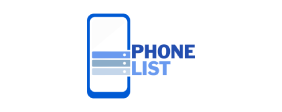Introduction
In today’s interconnected world, phone numbers play a crucial role in facilitating communication across borders. If you’re interested in understanding how phone numbers work in Europe, this article will provide you with a comprehensive guide to navigate the intricacies of European phone number systems. Whether you’re a traveler, a business owner, or simply curious, let’s delve into the fascinating world of European phone numbers.
Phone numbers in Europe generally follow a standardized structure, with variations in country-specific prefixes and number lengths. The typical European phone number format consists of the following components:
Country Code: Each country in Europe is assigned a unique country code, which is used to identify the specific nation in international phone calls. For example, Germany’s country code is +49, while France’s is +33.
National Destination Code: Also known as the area code or regional code, the national destination code represents a specific geographic area within a country. It is used for routing calls within the country. For instance, in Germany, Berlin’s national destination code is 30, and Paris’ national destination code in France is 1.
Subscriber Number: The subscriber number is the unique numerical identifier assigned to an individual phone line within a specific area. It follows the national destination code and can vary in length depending on the country.
International Dialing in Europe
To dial an international phone Ukraine Mobile Number List number from within Europe, you need to follow these steps:
Start with the international access code: Before dialing an international number, you must enter the international access code, which varies from country to country. In most European countries, this code is represented by a plus symbol (+).
Enter the country code: Following the international access code, input the country code of the destination country. This code allows the call to be routed to the correct nation.
Include the national destination code: After the country code, add the national destination code of the specific area you wish to reach within the country.
Dial the subscriber number: Finally, dial the subscriber number assigned to the individual phone line you are trying to reach. The length of the subscriber number can vary depending on the country and the specific service provider.
Mobile Phone Numbers in Europe
With the widespread adoption of mobile phones, mobile numbers Aero Leads have become an essential part of the European phone number landscape. Mobile numbers generally follow the same structure as landline numbers but with some variations. In Europe, mobile numbers typically start with a specific range of digits dedicated to mobile networks. These numbers are not tied to a particular geographic location, making them portable and enabling users to keep their numbers even when moving between regions or countries.
It’s worth noting that some European countries have implemented mobile number portability regulations, allowing individuals to switch between mobile service providers while retaining their existing mobile numbers.
Conclusion:
Understanding how phone numbers work in Europe is crucial for effective communication across borders. By following the standardized structure and dialing procedures, you can connect with people in various European countries seamlessly. Whether it’s for personal or business purposes. Knowing the intricacies of European phone numbers will undoubtedly enhance your communication experience in this diverse and interconnected continent.


